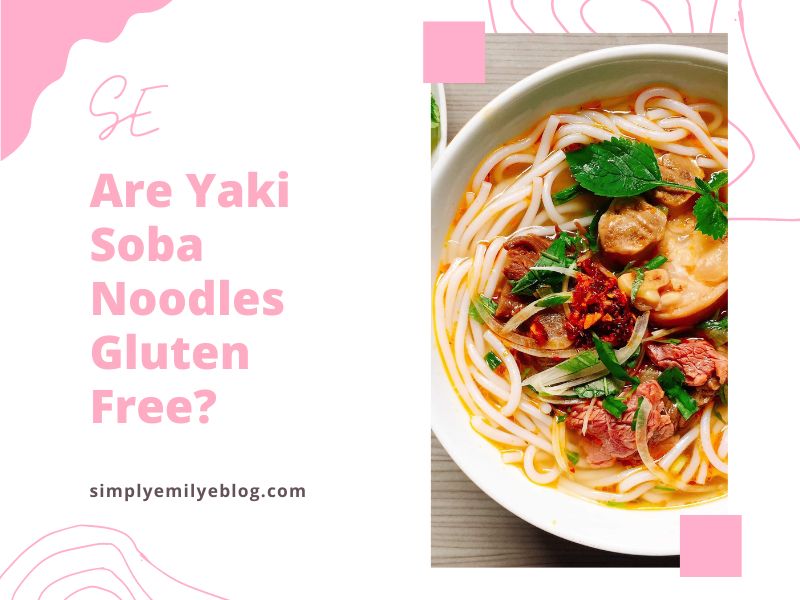Never heard of yaki soba noodles? Don’t worry – we’re here to tell you all about them! Yaki soba is a popular Japanese dish, made with wheat noodles, vegetables, and a savory sauce. It’s a great option for vegetarians, and it’s often served as part of a Japanese-style meal.
But if you’re gluten-free, you may be wondering: are yaki soba noodles gluten free?
The answer is a little complicated. The traditional recipe for yaki soba noodles uses wheat noodles, which are made with gluten. However, many stores now sell “gluten free” versions of these noodles, and they’re usually labeled as such. If you’re looking for a gluten-free version of yaki soba, make sure to check the label carefully!
Unfortunately, even if the noodles are labeled “gluten free,” there’s still a chance they may contain traces of gluten due to cross-contamination. This can happen when the same manufacturing line is used to make both gluten-containing and gluten-free products, or if there’s any contact between the two during the production process.
If you’re extremely sensitive or have Celiac disease, you may want to avoid yaki soba noodles altogether. Instead, you can look for alternative noodles made from gluten-free ingredients such as rice flour, buckwheat flour, or quinoa flour. These are widely available in Asian grocery stores and even some mainstream grocery stores.
You can also make your own yaki soba noodles at home. To keep them gluten-free, just use gluten-free noodles and pay extra attention to avoid cross-contamination. If you’re sharing the dish with others, you should prepare the gluten-free noodles in a separate pan, and preferably use different utensils for handling the gluten-free noodles.
Whether you’re using store-bought or homemade noodles, there are a few simple tricks to make sure your yaki soba noodles don’t contain any gluten. First, always double-check the label when buying noodles from a store. Second, if you’re preparing the noodles at home, make sure to keep them separate and use different utensils for handling them. After all, if you’re dining out, make sure to ask your server about the ingredients and preparation method.
Overall, yaki soba noodles can be a delicious part of a gluten-free diet. Just be sure to double-check the ingredients and remember to follow the tips above.
Are YakiSoba noodles vegan?
YakiSoba is a noodle dish that originated in Japan. It’s made with soba noodles, which are made from buckwheat flour, oil, and water. YakiSoba usually also includes various vegetables, such as cabbage, carrots, onions, and peppers. It is usually served with a savory sauce called yakisoba sauce, which is made from soy sauce, Worcestershire sauce, sugar, ginger, garlic, and other seasonings. Toppings are also often added, such as Japanese mayonnaise, pickled ginger, and fish flakes.
So, as we can see, both the noodles and the sauce contain various ingredients that may or may not be suitable for a vegan diet. The noodles are usually made from buckwheat flour, which is vegan-friendly. But the sauce may contain ingredients such as Worcestershire sauce, which typically contains anchovies. The other toppings may also contain animal products, such as fish flakes and Japanese mayonnaise.
Fortunately, there are ways to make a vegan-friendly version of YakiSoba. If you’re unsure whether the sauce contains animal products, you can either ask the restaurant or make your own vegan-friendly YakiSoba sauce. You can also opt for vegan-friendly toppings, such as vegan mayonnaise, pickled ginger, and toasted seaweed. By doing so, you can still enjoy the delicious YakiSoba without compromising your vegan diet.
In conclusion, answer is not straightforward. It depends on the ingredients used in the dish, as well as the toppings and sauces. Fortunately, there are ways to make a vegan-friendly version of YakiSoba, which can be enjoyed by vegans. So if you’re in doubt, try to find out what ingredients are used in the dish or just make your own vegan-friendly version at home.
See you soon!




